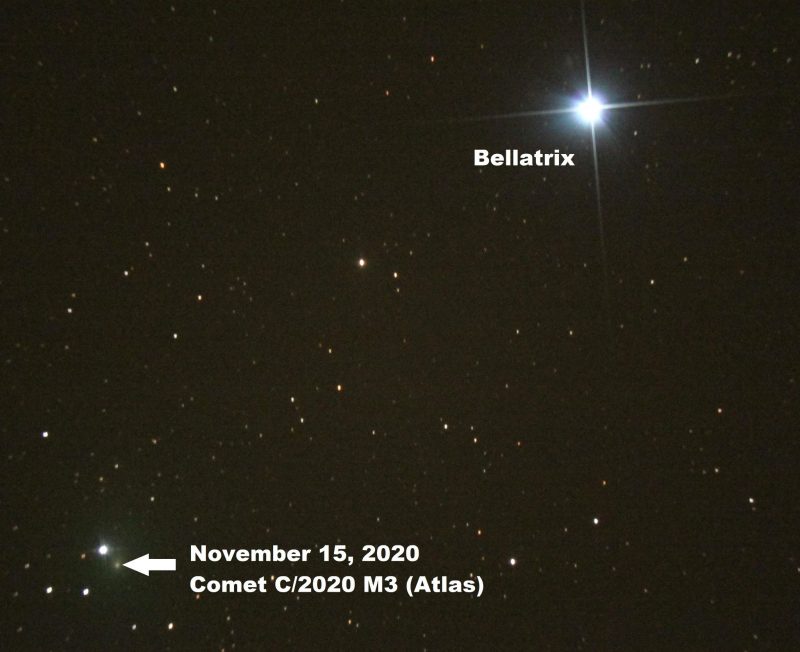
Bellatrix and Orion in the November evening sky
Bluish-white Bellatrix – aka Gamma Orionis – is the 3rd-brightest star in the easy-to-recognize constellation Orion the Hunter. It marks the left shoulder of Orion. Betelgeuse, a brighter reddish star, marks the Hunter’s right shoulder. Then another brighter star, Rigel, marks the Hunter’s left foot.
And in the month of November, Orion is just coming back to a convenient viewing time in the evening sky. So you’ll find it in your sky between your local sunset and your local midnight. You can use Stellarium to find out exactly when Orion rises over your eastern horizon.
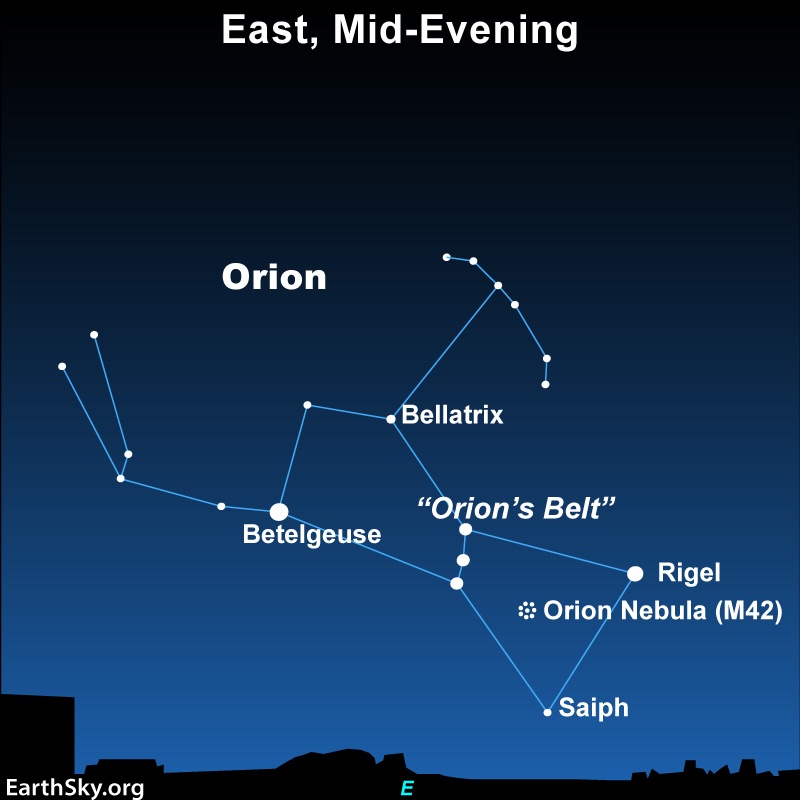
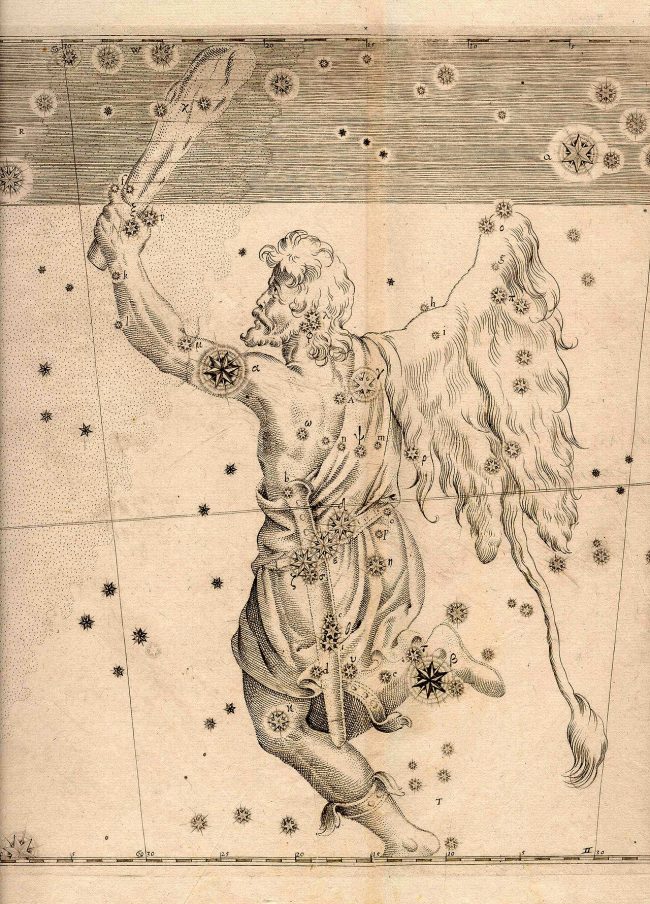
Bellatrix in lore and culture
In popular culture today, many know the name Bellatrix as J.K. Rowling’s dark witch, Bellatrix Lestrange, in the Harry Potter fantasy book and film series. In fact, Rowling frequently employed names from astronomy for important characters in her series: Sirius, Andromeda, Cygnus, Draco and Luna, among others.
Plus, in the history of the sky, Bellatrix comes from Latin and means female warrior. And Bellatrix is also sometimes called the Amazon Star.
According to Jim Kaler, before Orion’s bluish-white shoulder star carried the name Bellatrix, that name belonged to a different star. The golden star Capella carried the name Bellatrix in medieval times.
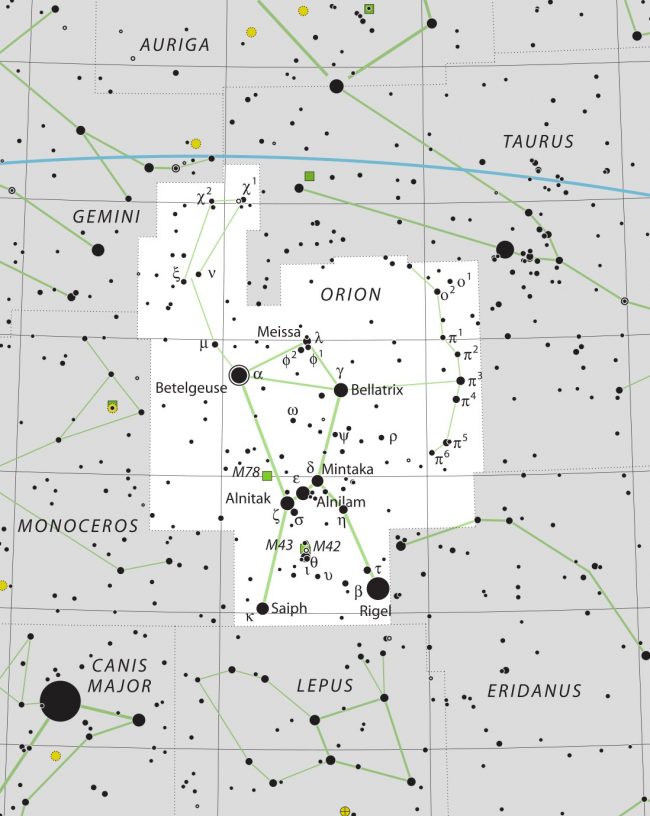
The brightness of Bellatrix and surrounding nebulosity
Generally, Rigel and Betelgeuse are considered the sky’s 8th and 11th brightest stars, with magnitudes of 0.13 and 0.50 respectively, while Bellatrix is approximately the sky’s 26th brightest star. Estimates vary of its magnitude depend on the source and vacillate between 1.59 and 1.64.
While Bellatrix has an apparent magnitude of 1.64, it has an absolute magnitude of -3.3. Apparent magnitude is a measure of how bright things look to an observer, or how bright it “appears.” Absolute magnitude is a star’s intrinsic brightness. Stars’ absolute magnitudes are measurements of how bright they would be if they were 10 parsecs (32 light-years) away from Earth.
Absolute magnitude is not a term observers often use; it’s more used in the scientific community when making a comparison between stars. Consider the star Saiph, representing the knee opposite Bellatrix’s shoulder star in Orion. Saiph “appears” dimmer than Bellatrix, and its apparent magnitude is 2.05. But Saiph’s absolute magnitude is -6.8! You can probably guess that this means Saiph is much farther away from us than Bellatrix, and you’d be right. Bellatrix is 240 light-years from Earth while Saiph is 720 light-years away.
It’s a white or bluish star
Bellatrix appears to have a white or bluish-white hue. When viewed through binoculars or a telescope, you might pick up a gaseous glow surrounding it.
The glow does not originate with Bellatrix itself but with its location within the great Orion Molecular Cloud complex, a star-forming region in the same direction in space as the constellation Orion. In Burnham’s Celestial Handbook, Volume Two, Robert Burnham wrote:
A faint diffuse nebulosity surrounding [Bellatrix], shown on the Skalnate Pleso Atlas, is merely an illuminated portion of the general nebulous haze which envelops much of Orion, and which naturally becomes visible in the vicinity of any highly luminous star.
Similar masses of nebulous haze are scattered across the entire region to the south of Bellatrix, culminating in the splendor of the Great Nebula itself.
Science of Bellatrix
Bellatrix is in spectral class B2 III. B stars are on the brighter, hotter and whiter end of the spectrum, and the number 2 means it is a hotter B type star than, say, a B6 star. The III denotes that it is a giant star, although Jim Kaler of the University of Illinois has said that Bellatrix in not an actual giant, but just has the spectral signature of a giant. Furthermore, he asserts that Bellatrix is probably a hydrogen-fusing dwarf, still on its way to the true giant stage.
At nine times the mass of our sun, Bellatrix could be a supernova candidate. However, if that doesn’t occur, it will become a massive white dwarf. Bellatrix may have a companion in Gamma Orionis B, a red dwarf that for the past 100-plus years has maintained a constant separation of 178 arcseconds. But Bellatrix’s possible companion star is not close enough for its matter to flow into Bellatrix and trigger a supernova.
As a matter of fact, Bellatrix is one of the hottest stars that you can see without optical aid. It has a temperature of 21,750 Kelvin (38,690 F or 21,477 C). Compare that to our sun, which is a mere 5,778 Kelvin (about 10,000 F or 5,500 C). Indeed, Bellatrix may be six times the size of our sun.
Orion is visible from both hemispheres
Skywatchers know Orion as a hallmark of the winter sky, at least in the Northern Hemisphere. The celestial equator cuts across Orion’s waist, with Bellatrix and the Hunter’s upper body on one side and his knees/legs/feet on the other. Therefore, observers can see Orion in both the Northern and Southern Hemispheres from around October through April. Naturally, the image of Orion that Northern Hemisphere inhabitants are familiar with would look upside down to them if they viewed the constellation from south of the equator.
The fact is, in the Southern Hemisphere, Orion is standing on his head. Use Stellarium to learn how you see Orion from your location.
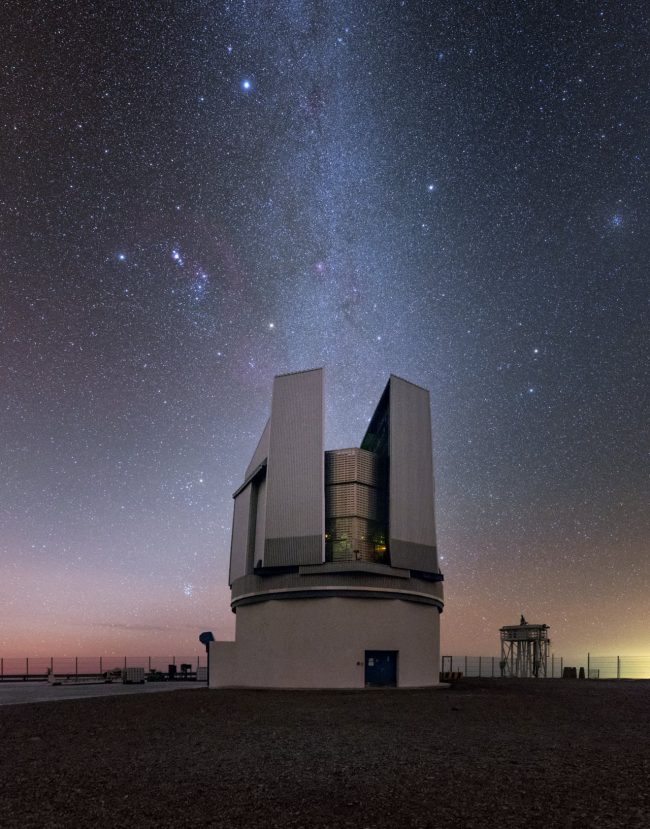
You’ll find Bellatrix at 5h 25m R.A. +06°20’ Dec.
Bottom line: Bellatrix is the third-brightest star in Orion. And it’s one of the hottest stars you can see without optical aid.











